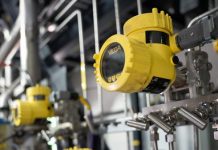The Flame Ionisation Detection (FID) method was first developed in the 1950s for the laboratory analysis of organic chemicals. When environmental regulations began to limit the emissions of volatile organic chemicals (VOCs) in the 1970’s and 1980’s, the FID method was adapted for emissions monitoring. Signal Group was one of the first companies in the world to develop VOC emissions analysers. Managing director James Clements explains how FID became the reference method and why it has lasted the test of time.
ackground
Organic chemicals have always been widely used in industrial processes, but awareness of the harmful effects of VOCs on health and the environment did not become significant until the 1970s. At that time, President Richard Nixon presented proposals on environmental protection which included the establishment of a federal Environmental Protection Agency (EPA). This led to the development of maximum allowable concentrations for pollutants, many of which were subsequently adopted around the world.
VOCs are common constituents in the emissions of processes that involve petrochemicals, paints, coatings, adhesives, waxes, disinfectants and cleaning chemicals. In many of these processes, solvents play a major role, and the release of VOCs represents a risk to health and the environment. Similarly, combustion processes give rise to VOC emissions, particularly where combustion involves the use of an organic fuel. This includes fossil fuels such as petrol, diesel and oil, as well as wastes and biofuels.
By monitoring total organic carbon (TOC) concentration in emissions, process operators can demonstrate compliance with relevant legislation. However, such measurements also provide insights for process optimisation, because, for example, the presence of organic compounds may be an indicator of incomplete combustion. In addition, TOC is frequently measured post-abatement to measure abatement efficiency.
Why was FID chosen as the reference method?
It is normal practice for regulators to specify a standard reference method for monitoring pollutants, so that compliance measurements are accurate and directly comparable with the limits, and with measurements from other process operators. FID has been widely acknowledged as the reference method for VOCs for over 50 years, and there are many reasons for this:
Already proven – initially developed as a detection method for laboratory Gas Chromatographs, FID was already well-established as a reliable technology for the detection of hydrocarbons. Adaptation for measuring VOC emissions was therefore relatively straightforward.
Cost – in comparison with methods such as mass spectrometry (MS) or Fourier transform infrared spectroscopy (FTIR), FID is relatively simple and therefore less costly to manufacture. This is important because, globally, the number of processes that generate VOC emissions is enormous, so it is important that reference method technology is affordable for the organisations, large and small, that are required to monitor their hydrocarbon emissions, or that need to monitor for other purposes such as process control or abatement management.
Specificity – the FID detection method is specifically designed to detect carbon-hydrogen (C-H) bonds, making it highly selective for organic compounds. Unlike some other detection methods, FID does not respond significantly to inorganic gases which helps to minimise interference from non-VOCs, providing more accurate and reliable emissions measurements.
High sensitivity – twent. Signal Group’s latest FIDs, for example, offer measurement resolution down to 0.01ppm. It is also important to note that FID sensitivity is much less variable than other techniques. Photoionisation detection (PID) for example exhibits widely varying response factors for individual hydrocarbons, rendering it inappropriate for the measurement of hydrocarbon mixtures. In contrast, FID is ideal for the measurement of total hydrocarbon content, whether the hydrocarbon is an individual compound or a mixture of species.
Wide range – in addition to their high sensitivity, FIDs are also able to make measurements at significantly higher ranges. The S4 Solar FID for example, has a number of user-selectable ranges, all the way from 0 to 1ppm with a resolution of 0.01ppm, up to 0 to 300,000 ppm with a resolution of 1ppm.
Fast response – FID analysers provide an almost immediate response to a sample gas, which is extremely important for regulatory compliance, particularly with processes emissions that can vary significantly from one minute to the next. The typical response time for the latest FIDs can be less than 1 second. This is also important for process control and engine emissions testing.
Stability and reproducibility – decades of experience in a wide variety of applications have shown FID’s ability to produce stable measurements in the long-term. Similarly, when identical FID units measure the same sample gas, the same results are given. This is an extremely important feature of standard reference methods because it provides confidence in measurements – for both the user and the regulator.
Applicable to continuous monitoring – many VOC emissions regulations necessitate continuous monitoring, so an important feature of FIDs is their compatibility with Continuous Emissions Monitoring Systems (CEMS). Nevertheless, FIDs should be sufficiently flexible to be suitable for discontinuous monitoring with portable instruments.
FID development – a UK manufacturer’s perspective
Although the Group’s latest range of FIDs feature a fourth-generation detector, it is truly remarkable that the core measurement technology has changed very little since the company first developed a FID in the 1970s. This is because of the unique precision-machined monobloc detector which guarantees uniformity of production in a compact, leak-free design.
Most of their FID development work has therefore focused on issues outside of the core technology. These issues have either been application specific, or have addressed ease of operation, connectivity and data management.
The Group’s first FID analysers in the 1970s were able to provide accurate consistent measurements for total hydrocarbons. Now, thousands of instruments later, their successors are still producing the same reliable data, but with built-in tools and accessories that make the monitoring process easier and less prone to human error.











